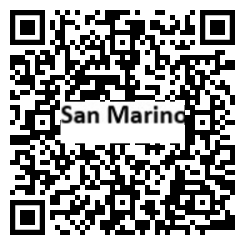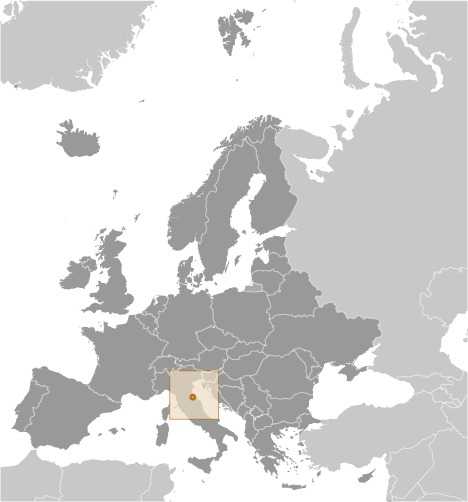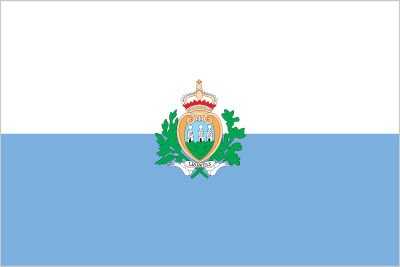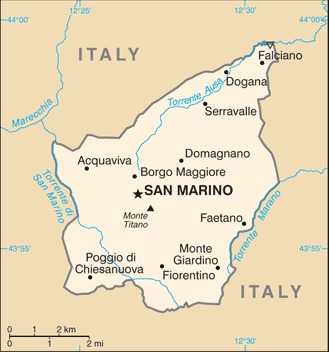Introduction
Background
Geographically the third-smallest state in Europe (after the Holy See and Monaco), San Marino also claims to be the world's oldest republic. According to tradition, it was founded by a Christian stonemason named MARINUS in A.D. 301. San Marino's social and political trends track closely with those of its larger neighbor, Italy.
Geography
Area
total : 61 sq km
land: 61 sq km
water: 0 sq km
Climate
Mediterranean; mild to cool winters; warm, sunny summers
Natural resources
building stone
People and Society
Population
total: 35,095
Ethnic groups
Sammarinese, Italian
Languages
Italian
Religions
Roman Catholic
Population growth rate
0.57% (2024 est.)
Government
Government type
parliamentary republic
Capital
name: San Marino (city)
Executive branch
chief of state: co-chiefs of state Captains Regent Alessandro ROSSI and Milena GASPERONI (for the period 1 April 2024 - 30 September 2024)
head of government: Secretary of State for Foreign and Political Affairs Luca BECCARI (since 8 January 2020)
Legislative branch
description: unicameral Grand and General Council or Consiglio Grande e Generale (60 seats; members directly elected in single- and multi-seat constituencies by list proportional representation vote in 2 rounds if needed; members serve 5-year terms)
Economy
Economic overview
high-income, non-EU European economy; surrounded by Italy, which is the dominant importer and exporter; open border to EU and a euro user; strong financial sector; high foreign investments; low taxation; increasingly high and risky debt
Real GDP (purchasing power parity)
$2.218 billion (2021 est.)
$2.045 billion (2020 est.)
$2.19 billion (2019 est.)
Real GDP per capita
$65,700 (2021 est.)
$60,100 (2020 est.)
$64,100 (2019 est.)
Agricultural products
wheat, grapes, corn, olives; cattle, pigs, horses, beef, cheese, hides
Industries
tourism, banking, textiles, electronics, ceramics, cement, wine
Exports
$3.42 billion (2021 est.)
$2.535 billion (2020 est.)
$2.651 billion (2019 est.)
Exports - partners
US 10%, Germany 9%, France 9%, Austria 9%, Romania 7% (2022)
Exports - commodities
washing and bottling machines, woodworking machines, furniture, other foods, packaged medicine (2022)
Imports
$2.934 billion (2021 est.)
$2.164 billion (2020 est.)
$2.315 billion (2019 est.)
Imports - partners
Italy 22%, Germany 20%, Poland 7%, Spain 7%, Netherlands 7% (2022)
Imports - commodities
electricity, garments, cars, aluminum, footwear (2022)
Exchange rates
euros (EUR) per US dollar -
Page last updated: Wednesday, July 24, 2024




